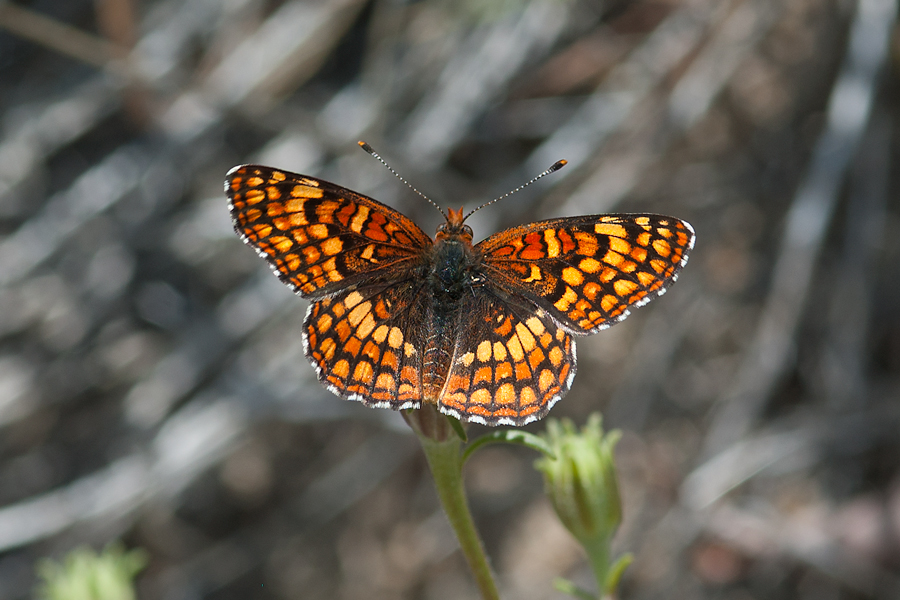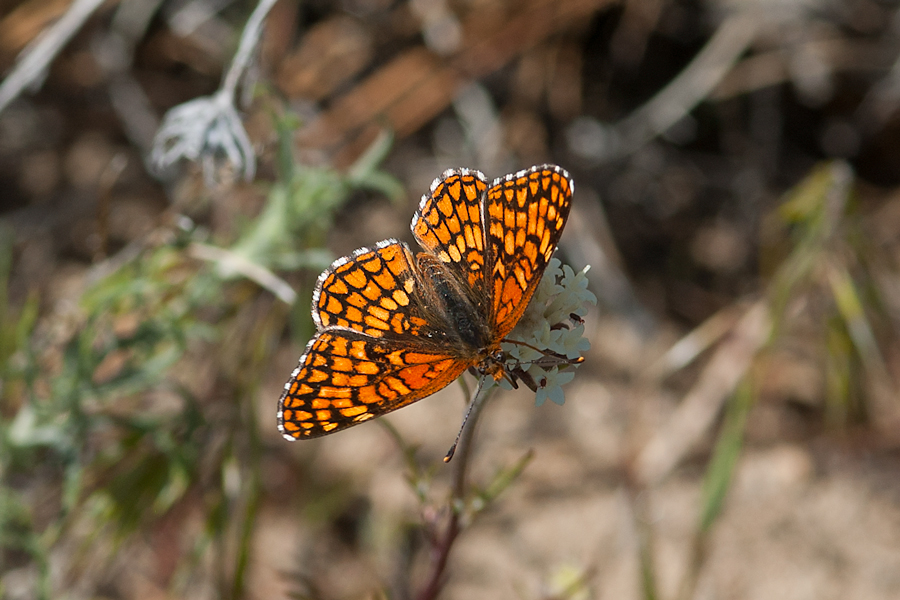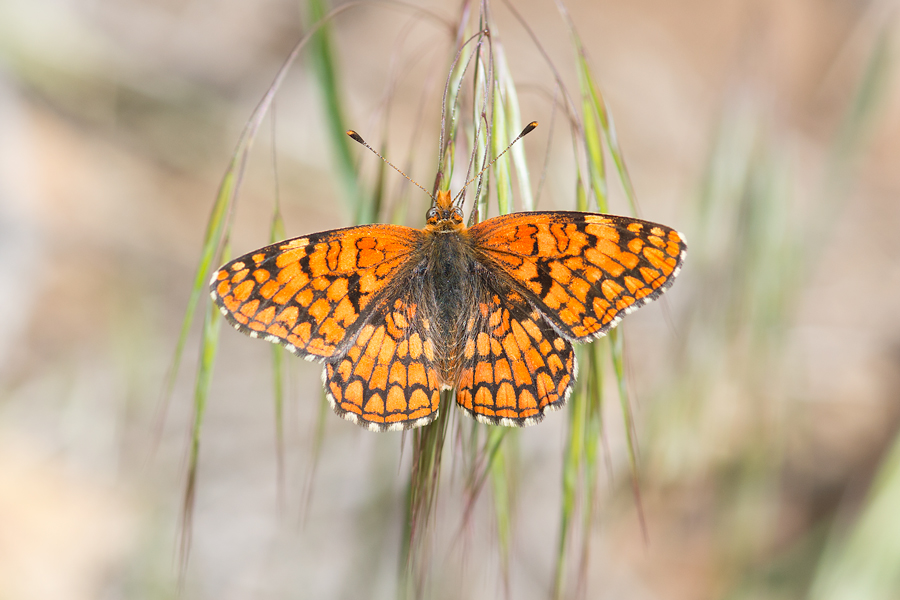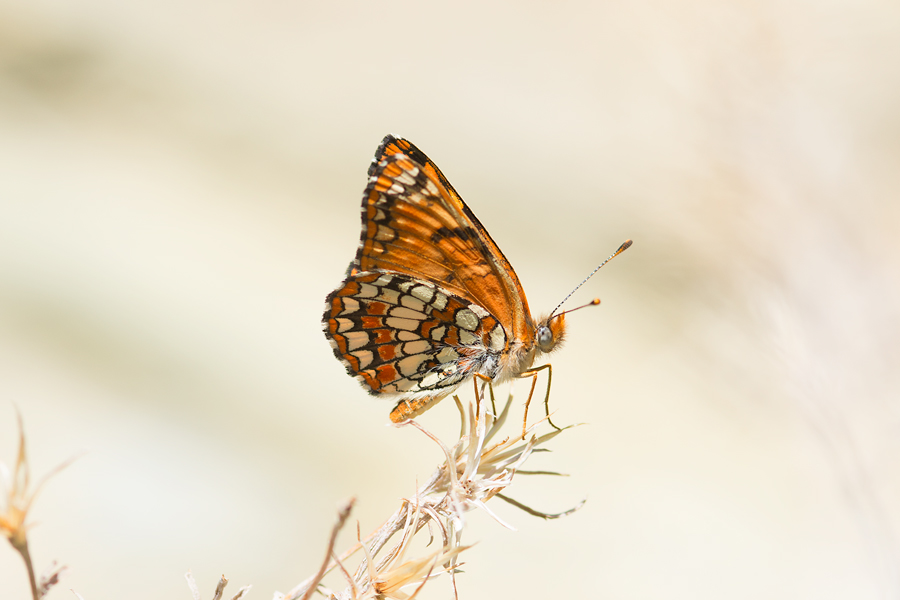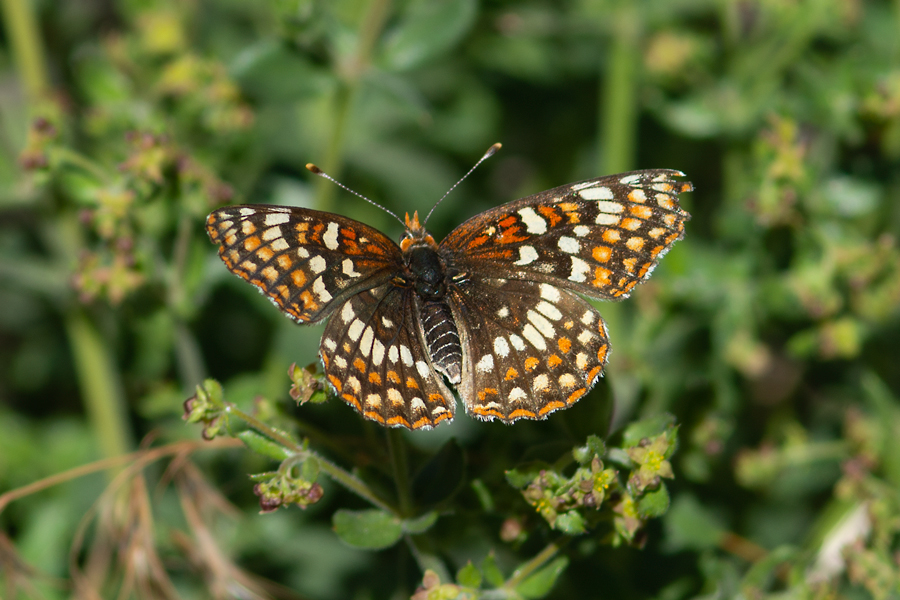Chlosyne palla australomontana
Northern Checkerspot
Chlosyne palla is one of several closely-related aster-feeding checkerspots that are sometimes nearly indistinguishable. In southern California, we have species palla, gabbii, and acastus/neumoegeni. Geography usually simplifies things for us: Chlosyne acastus neumoegeni (which may be a full species) flies mainly in Mojave Desert washes (and it looks different from nearby gabbii). Gabbii is more at home in the mountains, as in the Santa Monicas and San Gabriels, and along the coast. Chlosyne palla australomontana can be found from the Frazier Park area and the Tehachapis northward into the Kern River region to the southern end of the Sierras.
Subspecies australomontana was named by John Emmel in the Systematics book, pp. 141-2, with a Type Locality at Kennedy Meadows, and I'm following his arrangement, which sees all the southern California palla as being in subspecies australomontana. Ken Davenport believes those from Kennedy Meadows, Bald Mountain, and generally on the desert side of the mountains (Nine Mile Canyon, Kelso Valley, Walker Pass, etc.) are best considered australomontana, while those from the western slope of the Sierras inc. Johnsondale and the west side of Sherman Pass Road down to the Greenhorns and west side of the Piutes are best called "near palla." He says the Tehachapi and Frazier Park populations - often mistaken for gabbii - should be either treated as a segregate or placed within australomontana. For now I prefer to follow Dr. Emmel and lump these into one variable group.
An interesting paper from 2014 (Elizabeth C. Long, Robert C. Thomson, Arthur M. Shapiro, "A Time-calibrated phylogeny of the butterfly tribe Melitaeini," Molecular Phylogenetics and Evolution (79/1), pp.69ff.) suggests a clade consisting of C. palla, gabbii, whitneyi, acastus, neumoegeni, and hoffmanni diverged from the other butterflies in the Chlosynina subtribe approximately 5.5 million years ago, as the Miocene ended and the Pleiocene began. The study found that the desert subspecies we've been calling C. acastus neumoegeni was instead a sister taxon to gabbii rather than acastus, "having diverged ~2.3MYA." They found C. palla altasierra to in fact be not palla but with a group consisting of acastus, gabbii, and whitneyi; true palla diverged from that group approximately 4 million years ago. Which means that despite appearances, there is scientific evidence that palla and gabbii diverged ca. 4 million years ago. Such are the limitations of judging butterflies by appearance alone and the promises of scientific research to see what the eye cannot.
